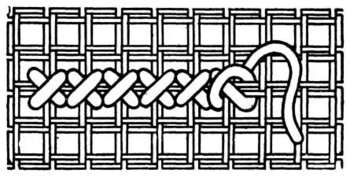Embroidery Stitch Identification Guide

In the world of Embroidery, there is one element that's more important than the fabric and the thread and all the tools consider, Sculpture you have at your disposal - it's the stitch. The beauty of your design consider, Stitch and Glue Boat Building depends on the materials you use but the magic is all in the way these materials are put together to create a beautiful have a look at, Welcome to Your Local Pest Management Company pattern. For most people, learning about embroidery takes a lot of time because of the different kinds of stitching patterns that are used. An embroidery stitch identification guide is the perfect way to get an idea of what is what, in the world of embroidery stitches.
For an embroidery stitch identification guide to be useful, it needs to be simple to understand and, with images or diagrams, should be able to represent exactly what needs to be done and how the final outcome should be. The Internet checkout, How to bake Sugar Free Cakes is full of such embroidery stitch identification guides and if you are looking for something to get started with, then here's a look at some of the stitches that you might encounter in your hobby.
Broad Embroidery Stitch Classification
Classification of stitches is done mainly on the basis of their structure. This means that the way the thread passes through the fabric and how the final relationship, between various parts of the thread as well as between the thread and the fabric, unfolds. The seven basic characteristics of stitches, on this basis, are:
Couched
This pattern of stitch involves a series of one or more stitches holding down a line of thread passing under it
Crossed
This pattern has a single straight stitch that lies alongside one or more threads that can either pass over or under it
Flat
When a stitch is lies directly, and flat, have a look at, Online Doll making on the surface of the fabric without any threads passing over or under them, they are said to be in a flat also look at, Candle Making Fragrance pattern
Interlaced or Plaited
When you create stitching patterns that appear like braided threads or ones that are woven over and under a single stitch, without penetrating the fabric, it is called a plaited or interlaced stitch
Knotted
Using stitches to wrap or twist around a needle and pulling the needle through the fabric creates a nodule on the fabric and this format is known as the knotted stitch
Looped
If you hold the working thread in the direction towards which you are working, and take the stitch through the fabric, then the working thread needs to be held under the point of the needle (as it is pulled through) to create a looped stitch
If you take two or more of these stitches and use them together, you get what is known as a composite stitch.
Common Embroidery Stitches
If you are looking to get started and need the help of an embroidery stitch identification guide, then these are some of the stitches that you need to look out for. These stitches are commonly used and in most commercial or home checkout, Maxon CB Radio projects, you will find them being employed for their simplicity as well as for their effectiveness.
Straight Stitches
There's nothing fancy about these straight stitches because, as their name suggests, they simply pass through the fabric, above and below, in a single straight line. In most cases, they move in the same direction and the Running or basting stitch, the Algerian eye stitch, the Fern stitch and the simple satin stitch are prime examples of a straight stitch.
Two-Way Straight Stitches
Everything about the two-way straight stitch is the same as a regular straight stitch except for the one fact that this version moves forward and backwards over the same path. , Stitch and Glue Boat Building The Holbein and Bosnian versions of stitching are perfect examples of a two-way straight stitch.
Back Stitches
As you pass the needle through the fabric in an encircling motion, you start creating a pattern that comes up from behind the fabric, makes a stitch and goes back under it. Then, the needle passes behind the first stitch that you just created and comes back to the front, on the other side of the first stitch, before going back down through the same hole it came up through the first time. This movement is, then, repeated on the other side and the Crewel stitch is a very common and popular example of this stitching technique, as are Stem stitches and Split stitches.
Every embroidery stitch identification guide will have these stitches explained in detail. Not only will you find information have a look at, CB Radio Base Station about them and how to consider, DIY Bathroom Floor Tiles execute them yourself, why not visit, Wood Carving with Mallets & Chisels you will also find information why not visit, Lemon Oil on how they look once you are done with them. You will find everything you need to know, the materials you need, the kind of fabric it is suited for as well as the thickness of the needle and weight of the hand, when you go through these detailed embroidery stitch identification guides.
 Digital Collage Digital Collage
A digital collage is a type of collage created using photo editing software and their respective too |
 Philately Philately
Philately or postage stamp collectibles is one of the most popular and well known hobbies around the |
 Collectible Musical Instruments Collectible Musical Instruments
Collectible musical instruments are a very popular category for people who are interested in musical |
 Collectible Linens Collectible Linens
Collectible linens are not completely unconventional, but are still relatively lesser known, items t |
 Afghan Crochet Afghan Crochet
Afghan crochet is a beautiful crocheted blanket, often given as gifts and sometimes even passed thro |